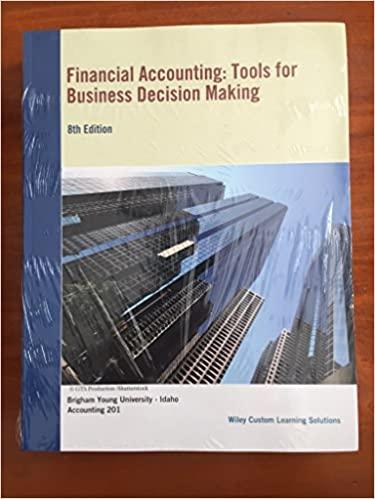Answered step by step
Verified Expert Solution
Question
1 Approved Answer
8 . 3 Debt and Equity Investments Company Sigma purchases the following debt and equity securities at the start of year X 2 : -
Debt and Equity Investments
Company Sigma purchases the following debt and equity securities at the start of year X:
ordinary shares in company D for a total value of Sigma classifies
these shares in D as a nontrading investment.
ordinary shares in company T for a total value of Sigma classifies
these shares in T as a trading investment.
noncumulative preference shares in TR for a total value of These
preference shares are not quoted, and so the market value cannot be determined reliably.
These are classified as nontrading investments.
bonds of company C with a maturity of years for a total value of
Company Sigma measures these bonds at amortized cost. The face value of the bond is
The interest is paid annually. The effective interest rate at the date of
purchase was
A zerocoupon bond with a face value of and remaining life of years.
However, it is expected that the firm will only pay at the end of the bonds life
leading to a total value of Company Sigma measures these bonds at amortized
cost
During X the following events take place:
At the end of X the market value of the shares in D is
At the end of X the market value of the shares in T is
At the end of X Sigma expects only to receive at the end of the bonds life.
The new market rate is Sigma deems the bond to be impaired.
During year X the following events take place:
In May of year X company Sigma sells half of its shares in T for At the
end of year X the market value of the remaining shares in T is per share.
In year X company TR pays a dividend of per share on its preference shares. The
preference dividend is not cumulative At the end of year X management, using cash
flowbased valuation techniques, values the investment in TR at
At the end of year X the management of company Sigma intends to sell the bonds of
Company C in a short period of time and therefore decides to apply the fair value method
to the bonds. At the end of year X the fair value of the bonds is and they
are classified as a trading investment.
At the end of X Sigma sells its investment in company D for
Required:
Ignoring taxes, use journal entries to account for the following events:
The purchase of the investments at the start of year X
The accrual and receipt of interest on the bonds for the year X
The fair value adjustments at the end of year X
The impairment of the zerocoupon bond at the end of X
The accrual and receipt of interest on the bonds for the year X
The receipt of dividends on company TRs preference shares in year X
The sale of shares in company T in May, X
The fair value accounting of the investment in company TR in year X
The classification of bonds in company C as trading investments at the end of year X
The fair value adjustments of other investments at the end of year X
The sale of the investment in company D at the end of year X
Step by Step Solution
There are 3 Steps involved in it
Step: 1

Get Instant Access to Expert-Tailored Solutions
See step-by-step solutions with expert insights and AI powered tools for academic success
Step: 2

Step: 3

Ace Your Homework with AI
Get the answers you need in no time with our AI-driven, step-by-step assistance
Get Started


